Meymand Rocky Village: A Photographer's Dream
Located in the arid mountainous area of Kerman Province near Shahr-e Babak city, the Meymand Rocky Village is one of the few hand-dug rocky villages that still exist!
This village is a UNESCO World Heritage Site and for a good reason. Its structure is unlike anything you've ever seen before, and the people here have practically adapted to the harsh climate.
Thanks to a transhumance system of life based on agriculture and pastoralism, Meymand Village consists of a number of settlements, each designed to fit the environment and the season when people settle there.
The houses here are carved into the hard stone mountains, creating a breathtaking sight as they climb up the incline of the surrounding valley. And inside? You'll find chambers, corridors, and pillars displaying an architecture that's both functional and captivating. Follow us to learn more as we explore the fascinating history and breathtaking sights of Meymand Village.
History of Meymand
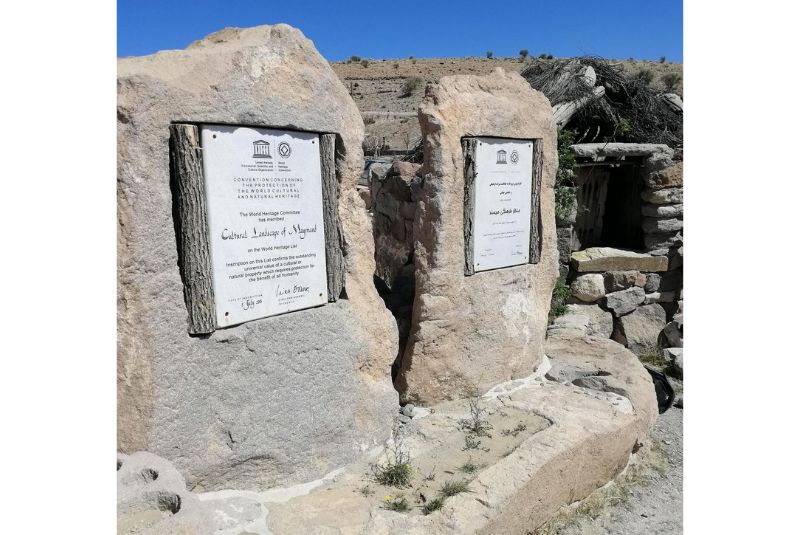
Meymand is a troglodyte village believed to be one of the earliest human settlements in Iran. The birth of Meymand is shrouded in mystery, with historians divided on the village's origins. The first theory suggests that the village was constructed by a group of the Aryan tribe about 800 to 700 years B.C.
One theory also suggests that Meymand was created during the time of Mithraism, an ancient Iranian religion that revered mountains as sacred. Followers of this religion would seek refuge in the darkness of caves and catacombs to pray and meditate. It is believed that Meymand was created as a collection of catacombs and prayer refuges by these early worshippers. In fact, some cups with birth motifs found in Meymand also suggest that the village was used to pray to the goddess of fertility.
Another theory suggests that Meymand was established in the early 3rd century A.D. when people realized the favorable weather conditions of the region and chose to make it their home.
However, the strongest theory is based on the discovery of pottery works in the Meymand castle, which dates back 2 to 3 thousand years. Regardless of its origin, throughout the ages, it has served as a winter shelter for shepherds, and the horseshoe shape of the area made it a convenient shelter for people hiding from invaders who wanted to have a peaceful life. What's even more remarkable is that people still live there!
| Related: Top 5 Beautiful Iranian Villages
Settlements in Meymand
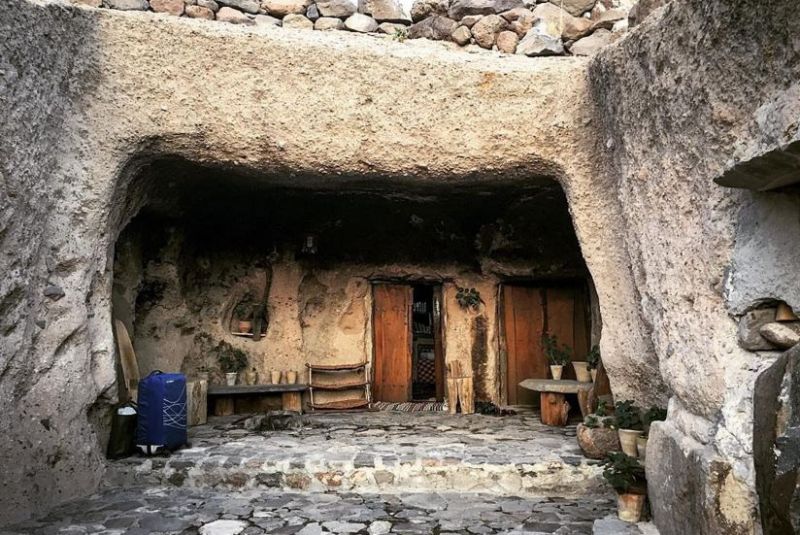
Meymand's settlements are a fascinating example of how humans have adapted to harsh and ever-changing environments. The inhabitants of Meymand move between three different types of settlements throughout the year, each with unique features and architectural style.
During the spring, people live in Saraghols, which provide a fixed temperature and protection from the wind. There are two types of houses in Saraghols; Maarkhanen and Mashkdan. Maarkhanen is a semi-underground circular structure that blends seamlessly with the surrounding landscape. The Mashkdan houses, on the other hand, are above ground and made of stone walls covered with cone-shaped roofs.
In the summer, people move to Sarbagh houses, which are mainly located around seasonal rivers. These homes are made of light materials such as leaves and tree branches to protect people from the scorching heat of the summer sun.
During the cold season of the year, people move to Meymand village, where they take refuge in hand-dug units called Kicheh. These units are a convenient place to keep warm during the winter, with each Kicheh containing multiple rooms and an open front area connecting it to another Kicheh.
| Discover: Abyaneh Village | The Red Village
The Architecture of the Unique Houses of Meymand Rocky Village
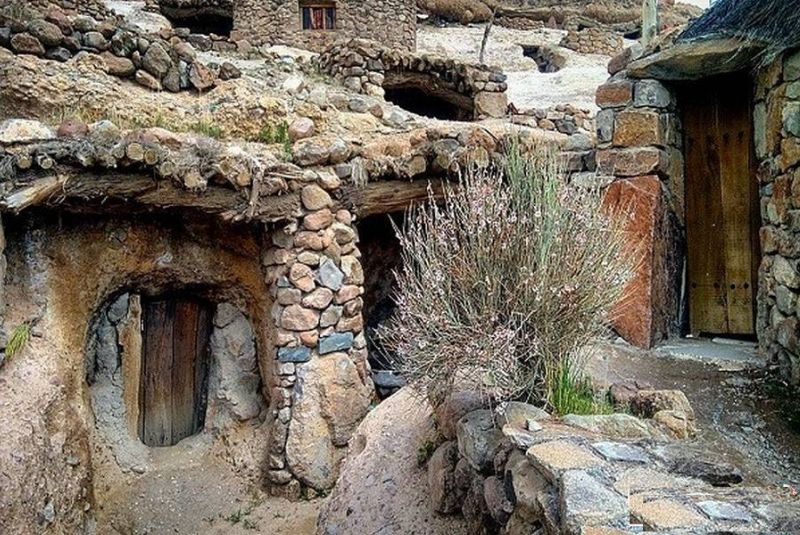
Meymand's architecture is nothing short of a marvel, a testament to human ingenuity and perseverance. The village's over 400 cave houses are a sight to behold, hewn from the rocky hillside and made entirely of volcanic ash. These houses, known as Kichehs, have everything a human needs.
In Meymand, the roof of one cave house is the bottom of another, a feat of engineering that boggles the mind. The interior of each Kicheh is unique, with round or rectangular rooms that are spacious and comfortable. To prevent water and soil from entering the houses, the builders created a 15 to 20-centimeter bump at the entrance, a small but ingenious detail that speaks to the level of craftsmanship that went into each structure.
Despite their age, the Kichehs of Meymand remain remarkably well-preserved. The houses are devoid of modern construction materials, with no trace of adobe, brick, or mortar. Instead, the village's ancestors put in countless hours of labor to excavate the hillside and create these masterpieces. Each Kicheh is built over two to five floors and varies in the number of rooms. Some even include a barn for livestock.
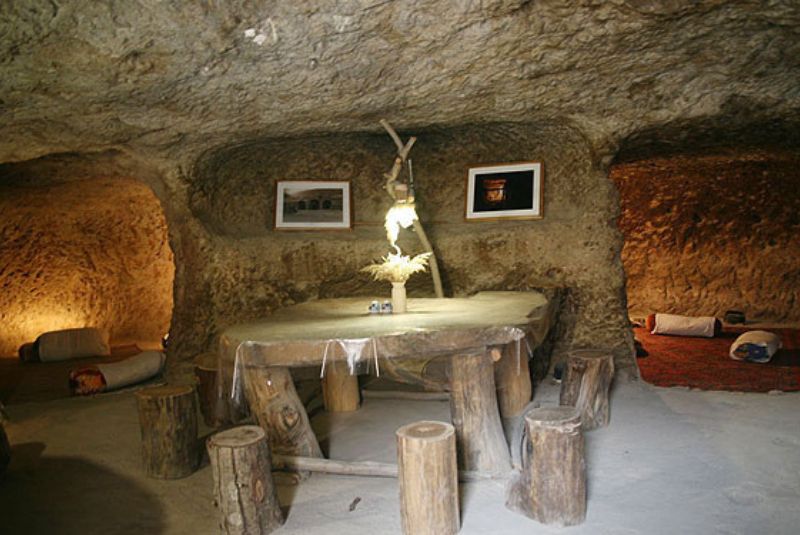
The interior of each house is cozy and functional, with niches and shelves for bedding, dishware, and lighting. The houses have no closets, but this is more than compensated for by the clever use of space.
The lack of a chimney in the village's architecture may seem like a design flaw, but it was a deliberate choice. The inhabitants used fireplaces for cooking and warmth, and the smoke from these fires darkened the walls and roof of each room, making them better insulated and providing a refuge from the winter cold and summer heat. In winter, the houses are typically 5 degrees warmer than the outside temperature, while in summer, they remain cooler, providing a welcome respite from the scorching heat.
The public buildings in Meymand are equally impressive, with a fire temple, a Hosseinieh, a public bathhouse, and a cave mosque all adding to the village's charm.
In short, Meymand's architecture is a true wonder and a reminder that with enough determination and perseverance, even the most inhospitable of environments can become a home.
| Suggestion: Masuleh Village | A Picturesque Gem in Gilan
Important Attractions to Explore in Meymand Rocky Village
The Fire Temple

The Fire Temple, also known as Atash-Kadeh or Kicheh Dobandi, is one of the most significant historical structures in Meymand. Some pieces of evidence suggest that Meymand used to be a Zoroastrian and pre-Zoroastrian settlement, and the Fire Temple is a testament to this history. The temple contains two fireboxes, leading some historians to believe that it was once a place of worship for the Zoroastrians. Nowadays, the fire temple is a Museum of Anthropology where you can find photo exhibitions and galleries that sell handicrafts.
Meymand Public Bath
The Old Public Bath is another highlight of Meymand, with spectacular architecture similar to the public baths built during the Safavid era. In the past, locals bathed in the cold and hot water pools provided at the public bath. Villagers would go to the public bath during the winter and autumn, while at other times of the year, they could take a bath in the open-air pools.
| Read more: Opert Ridge
Meymand Mosque
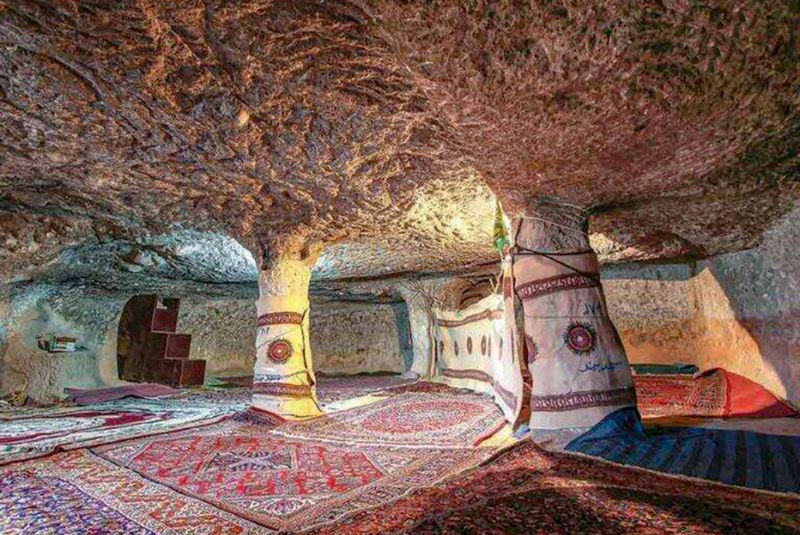
The mosque of Meymand, built around 200 years ago, is another impressive structure in the heart of the village. The mosque is around 120 square meters, with a floor covered in hand-woven carpets.
Hussainiya
The building of Hussainiya in Meymand is another highlight, comprised of three hand-dug houses. The building was transformed into a congregation hall for Shia Muslim commemoration ceremonies, especially those associated with the Mourning of Muharram, around 300 years ago.
Nearby Attractions
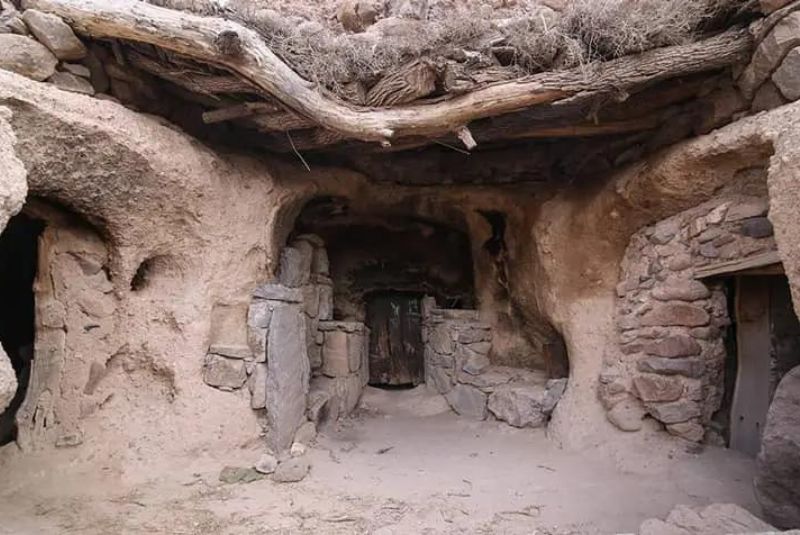
While Meymand Village is a destination in itself, the nearby attractions are equally mesmerizing. One of the must-see attractions near Meymand is Ghaleh Dezh, a castle located 3 kilometers south of Meymand that offers a panoramic view of the Meymand village.
Another nearby attraction is Haj Agha Ali House, located in the nearby Rafsanjan town and one of the largest adobe houses in the world. For nature lovers, Ayoub Cave is a charming natural attraction 119 km from Meymand. The cave is a fascinating example of the geological wonders of Iran, with stunning rock formations and underground lakes.
| Read more: Makhunik Village | The Mysterious Lilliput Village in Iran
Relics Found in Meymand Village
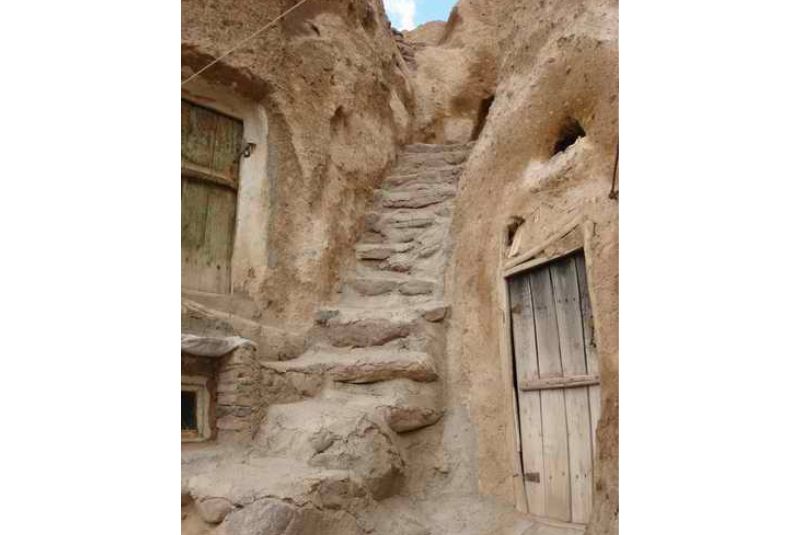
Meymand's rich history is not confined to its architecture and cultural highlights alone. The village is also a treasure trove of relics that speak to its long and fascinating past. Local legends claim that a precious historical inscription was found in the village, which read: "When mountains break, the legends of Meymand come true, and its treasures are uncovered. But only a person who's come from the sun can reach them." This enigmatic message speaks to the mystery and intrigue surrounding Meymand and its remarkable past.
Archaeologists have also found around 65 rock reliefs in and around Meymand. These reliefs feature bow hunting and war scenes, along with pictures of animals like dogs, horses, and goats.
The Lifestyle of Inhabitants of Meymand: A Lifestyle Like No Other
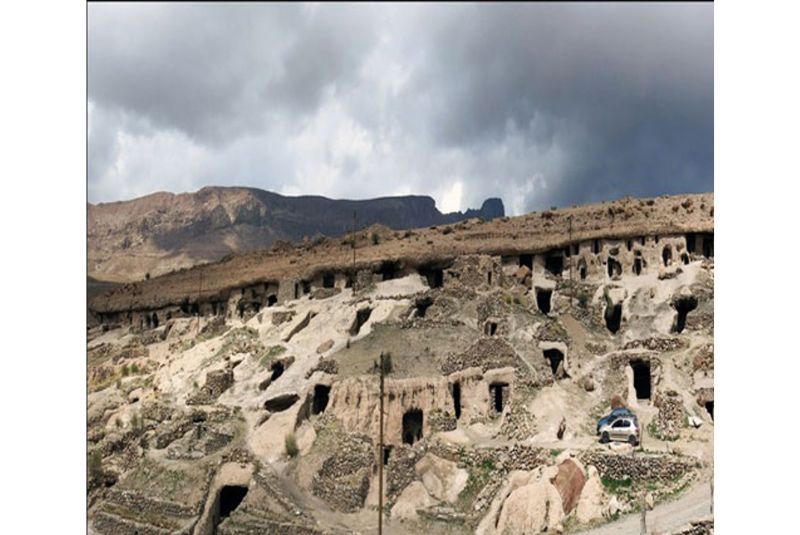
The inhabitants of Meymand are just as fascinating as the village they call home. These semi-nomadic people are both gardeners and shepherds, traveling around on the pastures in the first four months of the year, spending the next four months gardening in their orchards, and passing the last four months of the year in their unique cave houses.
The people of Meymand still speak Middle Persian, a language that has been in use for over a thousand years. Their mastery of this ancient language shows their deep connection to their past. This connection to their history and culture has helped the people of Meymand preserve their landscape and sustain their lifestyle over the centuries. In recognition of their efforts, Meymand won the prestigious UNESCO-Greece Melina Mercouri International Prize in 2005.
Handicrafts Made in Meymand
The village is known for its unique handicrafts. One of the most impressive handicrafts in Meymand is the feltwork. The locals raise sheep for their wool and turn it into felt, creating beautiful hats, mats, and other handicrafts.
The village is also known for its woodwork, with locals creating intricate designs using local materials. Another handicraft that is unique to Meymand is the weave basket. The locals gather the material for basket weaving from wild almond jungles near the village, creating beautiful and functional baskets that are both durable and aesthetically pleasing.
| Discover: Kalpourgan Village | The First Handicraft Village in the World by WCC
Where to Eat in Meymand
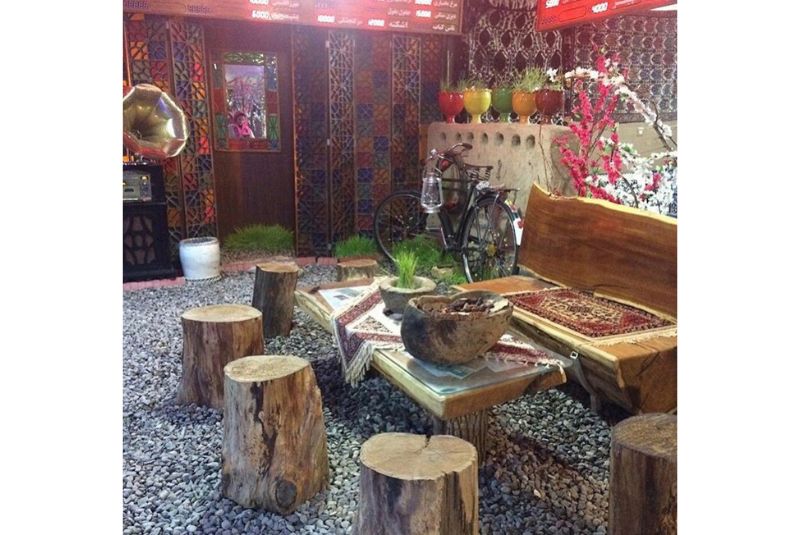
No visit to Meymand is complete without trying the local cuisine. The village and its surroundings offer a variety of options for foodies, from traditional dishes to fast food. Here's where to eat in Meymand:
Dast-Kand-Sangi restaurant in Meymand village is the perfect place to try traditional local foods. The restaurant is located in one of the ancient houses of Meymand, providing a unique and authentic dining experience.
If you're in the nearby town of Shahr-e-Babak, Noon-o-Namak traditional restaurant is a must-visit. The restaurant serves up delicious local cuisine, including kebabs, stews, and rice dishes.
For those looking for fast food options, Iranowich fast food in Shahr-e-Babak is an excellent choice. The restaurant offers a variety of dishes, including burgers, sandwiches, and wraps, all made with fresh, locally sourced ingredients.
Where to Stay in Meymand
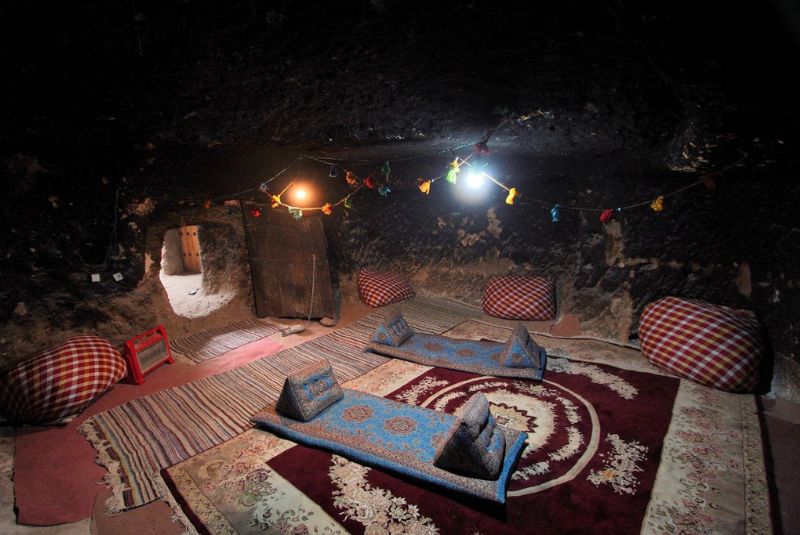
A visit to Meymand Village is not just a journey through history and culture but also a chance to experience a unique way of life. And when it comes to accommodations, there are options that will allow you to immerse yourself in the local culture and way of life.
One of the best options for accommodation in Meymand is the traditional Meymand Guesthouse. This guesthouse is located in the village and offers visitors a chance to experience the local way of life by sleeping in a handmade cave.
If you prefer to stay in the nearby Shahr-e-Babak, you can choose from Rivas eco-lodge or Duna eco-lodge. For those seeking a luxury stay, Kerman offers two excellent options: Pars Hotel and Kerman Jahangardi Hotel. The Govashir Hotel and Akhavan Hotel in Kerman are perfect options for budget travelers.
| Learn more: Hawraman - Cultural Landscape of the Kurdish Lands
Conclusion
Meymand Village is a remarkable example of human settlement that has stood the test of time. Its unique architecture, fascinating history, and stunning natural surroundings make it a must-visit destination for anyone interested in exploring Iran's rich cultural heritage. From the ancient hand-carved cave houses to the breathtaking landscapes of the surrounding mountains, Meymand Village offers a one-of-a-kind experience that is sure to leave a lasting impression. So pack your bags, grab your camera, and get ready for an adventure like no other!
Share your story!
Comment below and let us know about your Experience.
Your story inspires others!


Comment
Leave a Comment